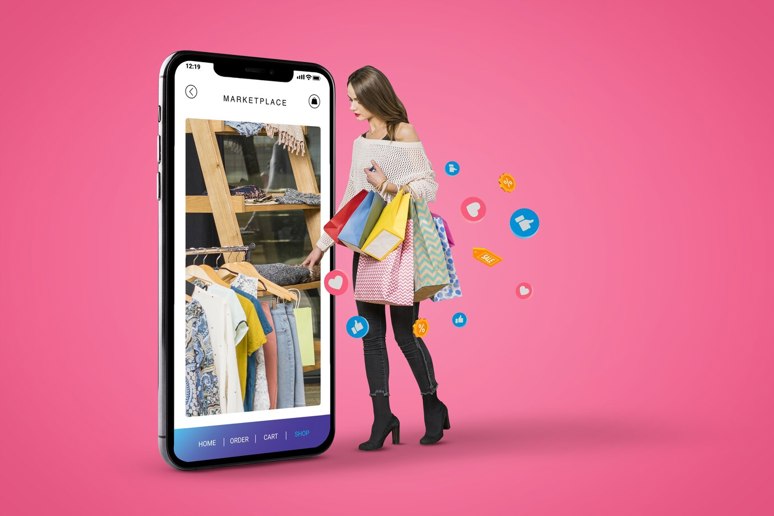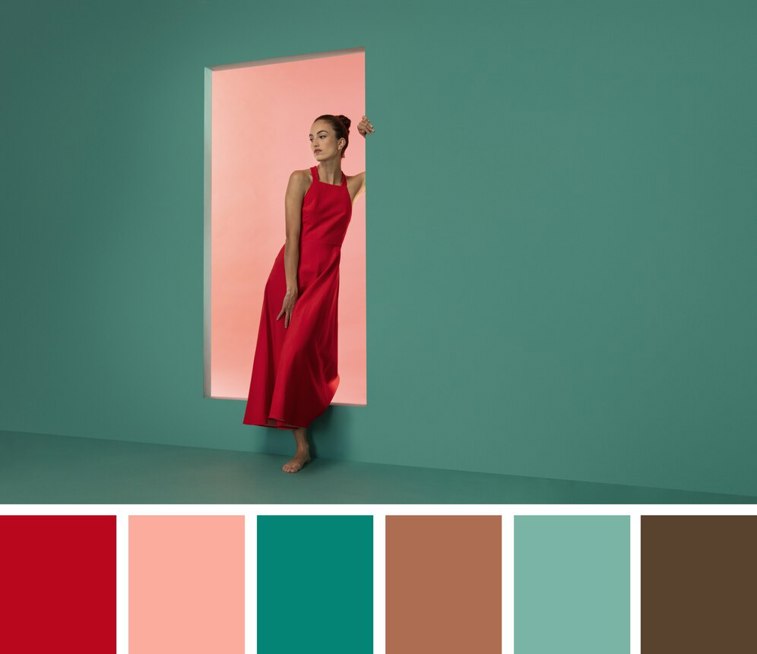How is DTC's Fashion and Apparel Industry Moving in 2025?
Table of contents
- Fashion and DTC
- Current Scenario of DTC Fashion Brands
- Evolving Industry of Fashion
- Best Channels for Fashion Marketing
- Importance of UX and UI in Fashion Marketing
- E-commerce Strategies for Fashion in 2023
- Beyond Conventional Retail Models
- Future Trends in DTC for Fashion
- Sustainability
- Brand-building over paid ads
- In Conclusion

The fashion and apparel industry commands the ecommerce space like never before. According to 2PM, an astounding 13 out of the top 20 direct-to-consumer (DTC) brands belong to this vibrant sector. Giants like SHEIN, Chewy, and Gymshark stand as testaments to the formidable influence wielded by fashion brands.
The fashion industry, propelled by digital advancements, increasing globalization, and shifts in consumer behavior, finds itself at the epicenter of transformative change. However, amidst this evolution, factors such as mounting inflation and supply chain complexities introduce an element of unpredictability.
Join us as we delve into the latest statistics, trends, and strategies that are molding the ecommerce fashion landscape for 2023 and beyond. Gain valuable insights into the current state of affairs and the exciting prospects that lie ahead.
Fashion and DTC
Choosing this business model signifies a strategic shift towards taking the reins of the brand experience directly, rather than relying on third-party intermediaries. In a landscape where success hinges on a brand's ability to resonate with consumers, command their attention, and foster unwavering satisfaction leading to loyalty, it's only logical for top-tier DTC cosmetics industry to seek greater control over these pivotal aspects, thereby outshining their competitors.
DTC fashion brands are revolutionizing the industry by bypassing traditional distribution channels and directly engaging with consumers. This approach places paramount importance on three key pillars:
- Customer Engagement: DTC brands prioritize building strong, direct customer relationships. Through personalized interactions, timely responses, and tailored experiences, they create a sense of connection and loyalty.
- Data Analytics: Using data-driven insights is at the heart of DTC cosmetics industry. These brands harness advanced analytics to understand consumer preferences, behaviors, and trends. This invaluable information guides product development, marketing strategies, and overall business decisions.
- Unique, High-Quality Products: DTC fashion brands offer distinctive, premium-quality products. By overseeing the entire production process, from design to delivery, they ensure a level of excellence that resonates with discerning consumers.
In embracing the DTC model, these fashion brands are reshaping how products reach consumers and redefining the essence of the brand experience. Through direct engagement, data-driven decision-making, and a commitment to excellence, they stand poised to lead the industry into a new era of consumer-centricity and innovation.
Current Scenario of DTC Fashion Brands
In direct-to-consumer (DTC) fashion, the DTC growth potential is nothing short of spectacular. According to Statista, the compound annual growth rate (CAGR) for the ecommerce fashion sector is projected to reach an impressive 14.2% from 2017 to 2025. By 2025, it is anticipated to hit a staggering valuation of $1 trillion.
In the United States alone, sales of apparel, footwear, and accessories have soared to $204.9 billion. This figure is set to surge by an additional 13% this year, with consumers slated to spend an equivalent amount on fashion items online.
A quartet of significant opportunities is fueling this surge:
- Expanding Global Markets: Beyond the traditional Western markets, the fashion industry is tapping into burgeoning global markets.
- Increasing Online Access and Smartphone Penetration: As online accessibility and smartphone usage continue to surge worldwide, the fashion industry is riding this digital wave.
- Emerging Middle Classes Worldwide: Rising middle-class populations with disposable income are stepping into the world of fashion e-commerce.
- Influencer and Celebrity Culture: Influencers and celebrities harness the power to drive sales and engagement.
However, established brands must navigate some formidable challenges:
- Eroding Brand Loyalty: Saturated markets are eroding traditional brand loyalty.
- Sustainable and Ethical Practices: Consumers are applying pressure for the use of ethically sourced and environment-friendly manufacturing materials.
- Technological Advancements in Virtual Worlds: NFTs and the metaverse pose potential technological disruptions.
During the COVID-19 pandemic, the fashion e-commerce landscape underwent a substantial shift. While initial reports indicated a decrease in consumer spending on luxury and fashion items, the industry proved remarkably resilient. Players like Zalando witnessed a 32% to 34% surge in gross merchandise value (GMV) during Q2 of 2020. Shein, an online-only fashion giant, saw its valuation double to an astonishing $30 billion, solidifying its status as the world's largest online-only fashion retailer.
One standout category in the fashion retail realm is athleisure. Its market size, valued at $155.2 billion in 2018, continues its upward trajectory. Predictions indicate a compound annual growth rate (CAGR) of 6.7% from 2019 to 2026, culminating in a market value of $257.1 billion.
Clothing and apparel, with lower digital barriers to entry, present a global growth opportunity. In the US, these industries accounted for nearly 30% of all ecommerce sales in 2021. In Europe, it's anticipated that each consumer will spend approximately $999 annually on fashion-related items by 2025.
The footwear segment, a vital component of the fashion e-commerce landscape, is also on an upward trajectory. Global market size is projected to grow from $365.5 billion in 2022 to an impressive $530.3 billion in 2027. Asia takes the lead in this segment, holding a commanding 54% of the global footwear market.
Accessories and bags, while having smaller absolute numbers, are experiencing robust double-digit growth. The fashion accessory segment is forecasted to maintain a CAGR of 12.3% between 2016 and 2026, with Asia-Pacific leading the charge.
In the realm of jewelry and luxury goods, the global market was valued at $228 billion in 2020. Projections indicate a rise to $307 billion by 2025, with ecommerce platforms facilitating approximately 20.8% of luxury goods sales. Luxury watches are poised to capture a significant slice of this revenue, with consumers projected to spend $9.3 billion on them in 2025.
Despite economic uncertainties, consumers are anticipated to return to paying full price for high-quality, timeless goods, similar to post-2008 financial crisis trends. The growing affluence in Asia-Pacific and the Middle East has boosted the average revenue per luxury consumer to an impressive $313.
The DTC fashion industry is witnessing exponential growth and defying expectations in the face of global challenges. The interplay of expanding markets, technological innovation, and shifting consumer preferences is reshaping the landscape, promising a dynamic future for the fashion e-commerce sector.
Evolving Industry of Fashion
The fashion industry finds itself at the intersection of a perfect storm characterized by geopolitical instability, disruptions in manufacturing and logistics, regulatory changes, and escalating costs across the energy, materials, and shipping sectors. This turbulent backdrop is further complicated by the evolving landscape of consumer behavior. Simultaneously, there's been a notable shift towards remote work collaboration and a surge in e-commerce transactions. Notably, sustainability has risen to the forefront of consumer concerns, with transparency and accountability now paramount for consumers, partners, and regulatory bodies alike.
Currently, three pivotal shifts are reshaping the landscape for DTC cosmetics industry and retailers:
Customer-Centric Retailing
Over the past couple of years, individuals have reevaluated their lifestyles, seeking equilibrium, freedom of choice, and simplicity in their daily lives. With a potential economic downturn looming and living costs on the rise, consumers are becoming more discerning with their spending. As a response, there's a growing preference for a SEO Help DTC retail experience that is not only environmentally and socially responsible but also resonates with local communities. In this context, brands are investing in digital solutions to drive, track, and expand sustainability initiatives, catering to consumers' demand for transparency. Moreover, there is an increasing inclination towards streamlined purchase processes and greater flexibility in product acquisition. Consequently, the industry is pivoting towards a consumer-centric approach, emphasizing the brand-consumer relationship through omnichannel strategies, which has notably propelled the direct-to-consumer (DTC) model to prominence in 2021.
Integration of Digital Technologies Across Business Models
While online shopping is thriving, the social experience of in-store shopping remains valued by many. The convergence of physical and SEO Help DTC retail has given rise to the 'phygital' trend, challenging fashion brands and retailers to adeptly combine wholesale, in-store, e-commerce, and social media experiences. Advanced solutions like Centric PLM™ and Centric Planning™ play a pivotal role in unifying planning and product lifecycle stages. By seamlessly integrating with CRM and ERP systems, these platforms replace isolated software solutions with a collaborative, real-time data platform. AI and ML forecasting capabilities empower brands and retailers to enhance decision-making, streamline product planning and development, and accelerate time-to-market.
Multidimensional Consumer Understanding
The days of categorizing consumers solely by age, gender, and size are behind us. Technology enables a more nuanced and personalized understanding of consumers by collecting data across an extensive array of criteria. However, fashion businesses need to strike a balance between data-driven insights and maintaining a human-centric approach. It's not just about amassing data but about using it purposefully, with the right analytical tools in place. Ultimately, consumers are individuals first and shoppers second. They seek brands they can trust that exude authenticity and prioritize their needs, demanding clear brand positioning, transparency, and customer-centric products.
In navigating this shifting landscape, fashion brands and retailers must adapt swiftly, aligning their strategies with these transformative trends to not only survive but thrive in the evolving industry landscape.

Best Channels for Fashion Marketing
Fashion brands are acutely aware of the indispensable role social media plays in their digital strategy. To navigate this dynamic landscape effectively, brands must cultivate a deep understanding of their connection to consumers through various social platforms. This entails a vigilant and impactful presence across major channels, tailored content strategies for platforms with the highest traffic, and a keen eye on emerging platforms with significant potential.
Leading fashion brands have harnessed the power of diverse social media channels as pivotal DTC Performance marketing conduits. For instance, Nike strategically positions itself at the forefront of sports discourse, celebrating athletes through viral ad campaigns. H&M leverages its expansive Twitter following to showcase exciting collaborations, while Prada collaborates with TikTok influencers to engage a younger audience. These brands employ a spectrum of strategies, from creative tweets to engaging stories, all aimed at sustaining consumer interest and amplifying brand awareness.
A standout example of this strategic approach is exemplified by Nike, whose investments in a direct-to-consumer (DTC) strategy have yielded substantial rewards. This dedication to enhancing customer experiences has led to a notable expansion of its digital footprint.
Social media's transformative influence on the fashion industry is palpable in this landscape. The average social media user now spends about 15% of their waking hours engrossed in networking apps, highlighting their central role in our daily lives. Social media has evolved beyond being a platform for trend consumption; it has become a seamless shopping experience. Social commerce sales are projected to nearly triple by 2025, with over one-third of Facebook users planning to make direct purchases through the platform in 2022.
Yet, amid this digital revolution, brands grapple with a critical challenge. As noted by Andy Crestodina, co-founder of Orbit Media, much-branded content often thinly veils advertising, prioritizing the brand's interests. This is reflected in social media engagement rates for global fashion brands, which can be notably low, ranging from 0.03% on Facebook and Twitter to 0.68% on Instagram.
However, certain content types are proving highly effective. For example, 46% of consumers prefer watching product videos before making a purchase. Platforms like TikTok and Instagram are praised for their ability to drive sales, allowing shoppers to see the product in action on real individuals—particularly influencers they trust.
Additionally, the emergence of influencers has reshaped the landscape. Today, anyone with a passion can become a celebrity in their niche, thanks to platforms like Instagram, LinkedIn, and Twitch. This shift has ushered in a new era of influencer marketing on social media.
Fashion brands are also venturing into the metaverse, employing virtual reality and augmented reality technologies to create immersive experiences. Nordstrom, for instance, launched its livestream shopping channel, harnessing Facebook and Instagram livestreams. The results have been remarkable, with some brands achieving conversion rates of up to 30% and experiencing lower product return rates.
As the economy continues its customer-centric shift, the integration of social media and cutting-edge technologies will be pivotal to the success of fashion brands. Those who adeptly employ these tools will be well-positioned to thrive in this landscape.
Importance of UX and UI in Fashion Marketing
Fashion is all about aesthetics and beauty. It is shallow in a manner where what shows is what sells, and this is why the significance of UI/UX design cannot be overstated. It serves as the turning point for creating a seamless and engaging online shopping experience.
Just as Burberry, an iconic English fashion brand, undertook a daring rebranding effort after a century of heritage, the fashion industry as a whole is embracing change. Elevating the eCommerce experience through a revitalized User Interface (UI) and User Experience (UX) design has become instrumental in propelling fashion brands into the future.
In the case of Burberry, their bold move towards a modern aesthetic necessitated a sleeker and more contemporary appearance across their global online presence. The decision to embark on such a rebranding endeavor was not without its risks. However, the potential benefits far outweigh any potential drawbacks.
In commemorating the fashion industry's shift towards minimalism and a renewed appreciation for its rich history, Burberry embraced a distinctive new look, harmonizing its iconic logo with fresh design elements inspired by its English heritage. The new Burberry eCommerce experience was centered around the brand's product line and narratives, aiming for a seamless connection between users and the brand's legacy.
By doing so, Burberry exemplified a forward-thinking approach, understanding that while fashion trends are cyclical, simplicity and a nod to heritage serve as enduring sources of inspiration. This rebranding effort not only marked a new era for Burberry but also reinforced the brand's commitment to adaptability and longevity in the ever-evolving world of fashion.
In the broader context of DTC fashion, UI/UX design plays an equally pivotal role. It is the keystone for delivering a gratifying and conversion-driven shopping experience. Incorporating interactive features like try-on functionalities and augmented reality options has become increasingly prevalent, providing customers with immersive and interactive ways to engage with products.
Metaverse
The concept of the "metaverse" is gaining traction. While its precise definition remains fluid, the vision entails a virtual realm where people engage in daily activities—connecting with friends, playing games, and even making purchases—using augmented reality (AR) and virtual reality (VR) technology.
Retailer Forever 21 has also joined forces with Roblox to establish virtual fashion ecommerce stores within its own metaverse, aptly named the Forever 21 Shop City. Here, players operate the virtual store as if it were their own, purchasing merchandise for their avatars through the game.
According to Katrina Glusac, Chief Merchandising Officer at Forever 21, "With Forever 21 Shop City, our goal is to expand how we engage with customers, extending our presence and product in new ways."
Roblox has emerged as a powerful platform for fashion brands, enabling the creation of immersive experiences for users and offering a direct line to Generation Z audiences. This foray into the metaverse is only the initial step, as we anticipate further experimentation with NFTs and other virtual reality ventures.
NFT
A notable development within this space involves non-fungible tokens (NFTs), unique digital assets exclusively owned by one individual and often acquired with virtual currency like cryptocurrency. Astonishingly, data reveals that on January 1, 2022, a staggering $87.03 million was spent on NFTs.
Celebrities like Reese Witherspoon have even envisioned a future where individuals possess a parallel digital identity, complete with avatars, crypto wallets, and digital goods. Once met with skepticism, this notion is now finding roots in reality.
Fitness apparel giant Under Armour has ventured into the world of NFTs, employing them in the retail sector. A collaboration with basketball icon Steph Curry saw the release of virtual reproductions of the shoes he wore when setting the NBA record as the all-time top three-point shooter. These digital NFTs allowed owners to virtually don the shoes in three metaverses: Decentraland, The Sandbox, and Gala Games.
Virtual Try Ons
Fast-fashion favorite PrettyLittleThing has unveiled a novel approach, showcasing products on virtual models. This innovation sparked lively conversation on the brand's Instagram page, as it introduced the concept of the "avatar in the metaverse."
As Ana Andjelic, Founder of The Sociology of Business, suggests, fashion companies could evolve into creative collectives within the metaverse. Each collection might carve out its unique identity, cultivating a vibrant community with creators benefiting from royalties based on item performance.
The digital revolution is transforming the fashion landscape, promising an exciting era for fashion enthusiasts with boundless creative possibilities on the horizon.
A meticulously crafted UI/UX design in DTC fashion is not just about aesthetics—it's about creating an environment where consumers can navigate, explore, and ultimately make confident purchasing decisions. It's about instilling trust, fostering brand affinity, and ultimately forwarding the fashion industry into a future where the online shopping experience is as rich and dynamic as a visit to a physical boutique.
E-commerce Strategies for Fashion in 2023
The intricacies of the shopping experience have become more multifaceted than ever before, particularly within the realm of online fashion. Startlingly, a significant 22% of online returns stem from the fact that the product received looks markedly different in reality compared to its digital representation. This persistent challenge is compelling numerous fashion brands to re-embrace the realm of traditional brick-and-mortar retail.
Hemant Chavan, the visionary founder of Brik + Clik, has talked about how the future lies not in choosing between ecommerce or retail, but in integrating both channels in a symbiotic manner.
This sentiment is underscored by the insights garnered from Shopify's Future of Commerce report, which unequivocally affirms that the era of omnichannel commerce is here to stay. The modern consumer now craves a holistic shopping experience that seamlessly blends the online and offline spheres:
- Product Visualization Paradox: A staggering 54% of consumers express a proclivity for examining a product online before finalizing the purchase in a physical store. Conversely, 53% envision themselves engaging in the opposite behavior—initially perusing products in-store before ultimately making the transaction online.
- Online Browsing, Local Store Verification: A significant 55% of consumers express a desire to peruse products online to gain an understanding of what is available in nearby physical stores. This signifies a growing trend towards using digital platforms for pre-shopping research before committing to an in-person visit.
- BOPIS Revolution: Over 50% of adult shoppers have embraced the 'Buy Online, Pick Up In Store' (BOPIS) model. This convenient strategy not only offers immediacy in acquisition but also prompts 67% of customers to augment their shopping carts with additional items during their in-store pickups.
As we witness this paradigm shift towards integrated commerce, it's imperative to highlight the innovative strategies that are driving this transformation:
DTC Brands Embrace Physical Spaces
Direct-to-consumer (DTC) brands are recognizing the value of physical stores in providing customers with a comprehensive and immersive shopping experience. These spaces serve as a tangible extension of their brand identity, fostering deeper connections with their audience.
Beyond Conventional Retail Models
Forward-thinking brands are exploring diverse strategies to elevate their online presence. These include dropshipping arrangements, which streamline inventory management, subscription models that foster customer loyalty, and exclusive online releases that generate anticipation and excitement amongst the customer base.
Examples abound of brands effectively executing these strategies. Canadian fashion label SMYTHE, for instance, has established a flagship store in Toronto after a series of successful pop-up ventures. Similarly, Gymshark, after experimenting with temporary retail setups, has now launched a permanent flagship store in the heart of London.
One compelling case study is that of a children's wear retailer, which pivoted from in-store events to virtual shopping experiences via platforms like Zoom during the challenging times of the pandemic. This strategic shift led to a remarkable surge in their reach, with one staff member catering to hundreds of customers each week, far surpassing the scope of in-person events.
Undoubtedly, the evolving landscape of fashion commerce in 2023 underscores the imperative for brands to invest in tools and platforms that enable them to transact seamlessly across various channels. Take, for instance, the trailblazing streetwear retailer, Culture Kings, which unveiled an immersive 14,000-square-foot establishment in Caesars Palace on the iconic Las Vegas Strip. This venture exemplifies a 'retail-tainment' approach, where customers are offered a rich array of experiences, from a recording studio to the enigmatic Secret Room, redefining the boundaries of physical retail.
As the year unfolds, we can anticipate further innovation and diversification in e-commerce strategies within the fashion industry, promising an even more engaging and customer-centric shopping experience.

Future Trends in DTC for Fashion
Economic Changes
Due to the COVID-19 pandemic, the apparel industry grappled with a multitude of challenges, including dwindling retail foot traffic and disrupted supply chains. Presently, the sector confronts the added complexities of inflationary pressures, geopolitical tensions, and a softened consumer demand landscape, as outlined in McKinsey & Company's report, The State of Fashion 2023. To thrive in this economic milieu, brands must exhibit agility and ingenuity in distinguishing themselves through innovative DTC Performance marketing strategies, dynamic product development, and an astute selection of sales channels.
Recognizing the need to navigate these economic shifts adeptly, forward-thinking brands are proactively offering versatile, timeless pieces alongside flexible payment options. By doing so, they not only cater to the evolving needs of their customer base but also demonstrate a keen understanding of the financial constraints that consumers may face in these trying times. This strategic approach not only fortifies brand resilience but also enhances consumer loyalty and trust.
Sustainability
The fashion industry has long faced scrutiny, particularly fast-fashion brands, which are often rightfully criticized for their manufacturing and inventory production methods.
In today's climate, where these critiques have gained significant traction in mainstream media and consumers are increasingly dedicated to combatting climate change, a noteworthy 52% of shoppers express a preference for companies that share their values.
One of the most important values for contemporary fashion consumers is sustainability. According to Statista's research, 42% of global customers actively seek out eco-friendly and sustainable products. Notably, certain countries such as Vietnam, India, and the Philippines lead the charge, with online shoppers in these regions prioritizing sustainable purchases.
This age is marked by heightened online activity, and information about suppliers is disseminated more rapidly, further intensifying our awareness of how events in distant corners of the globe impact both us and the planet. As Grace Beverly, the visionary Founder of TALA, aptly notes, this heightened awareness represents a pivotal shift in our collective consciousness.
The pandemic has also catalyzed a transformation in purchasing habits. A substantial 65% of customers now intend to invest in more durable fashion items, while an overwhelming 71% have resolved to prolong the lifespan of the clothing they already own. Consequently, the fashion resale market is experiencing a meteoric surge, outpacing traditional retail by a factor of 11, and is projected to attain a staggering valuation of $77 billion within the next five years.
Exemplifying this ethos is the renowned apparel brand Patagonia, which has sustainability ingrained in its core values. The company not only actively advocates for environmental causes but also demonstrates its dedication to sustainability through initiatives like the Worn Wear program. This innovative program encourages shoppers to engage in buying and selling used items, fostering a culture of reuse and reducing the demand for new products.
In this era of heightened consciousness and evolving consumer priorities, the fashion industry is undergoing a profound shift towards sustainability and longevity. Brands that prioritize these values are not only meeting the demands of an increasingly discerning customer base but are also contributing meaningfully to the global movement towards a more sustainable future.
Athleisure
The enduring trend of athleisure, a term coined to describe apparel suitable for both athletic pursuits and casual wear, continues to be a prominent force in the apparel industry. Today's consumers seek comfortable, versatile clothing that seamlessly transitions between various settings, making athleisure an ideal choice. In response, brands have expanded their offerings to encompass a wide array of athleisure products, ranging from yoga pants to cozy hoodies, in order to meet the burgeoning demands of this expanding market.
According to the comprehensive report by Mordor Intelligence on the Global Athleisure Market, the surge in health consciousness and a desire for an active lifestyle, coupled with a preference for a fit appearance, are driving consumers to integrate sports and fitness activities into their daily routines. This surge in participation has not only shifted market dynamics but has also led to a notable spike in demand for athleisure products.
Remarkably, athleisure represents a substantial global market, with a valuation of $248.31 billion in 2020. Forecasts indicate a robust compound annual DTC growth potential rate (CAGR) of 6.54% from 2021 to 2026, underscoring the sustained popularity and continued expansion of this dynamic segment within the apparel industry.
Personalization
Personalizing the customer journey has become a cornerstone of modern ecommerce. By showcasing products that align with a shopper's past interests or by retargeting them based on their previous interactions with your ecommerce platform, you're crafting a tailored online shopping experience that encourages them to make a purchase.
According to Shopify's research, a significant 44% of customers are comfortable with brands using their personal information to fine-tune messaging and enhance overall customer experiences, particularly through personalized product recommendations. However, it's crucial to tread carefully.
Privacy concerns among online shoppers are on the rise. Excessive personalization can cross into the realm of being intrusive, which is why brands that go too far in this regard are three times more likely to lose potential customers who abandon their shopping carts.
A prime illustration of striking the right balance between under- and over-personalization can be found in the approach taken by Culture Kings, a fashion ecommerce brand. Rather than focusing on hyper-personalization down to the level of using "first name" tags on their website, they opted to establish four global storefronts that cater to different currencies.
The result? Over half of the fashion brand's revenue now originates from its thriving ecommerce venture. This demonstrates how a thoughtful approach to personalization, one that respects customer privacy, can significantly impact a brand's online success.
Brand-building over paid ads
Brands are shifting their emphasis away from paid advertising and redirecting their efforts towards community-building and content marketing as the primary drivers of loyalty.
Rather than relying solely on paid promotional efforts, savvy brands are recognizing the value of cultivating a dedicated community around their products or services. This involves creating spaces where customers can engage, share their experiences, and form meaningful connections with both the brand and fellow enthusiasts.
Moreover, content marketing has emerged as a powerful tool for establishing and strengthening brand loyalty. By consistently delivering valuable, relevant, and informative content to their audience, brands can forge deeper connections, position themselves as authorities in their respective domains, and ultimately foster a sense of trust and affinity with their customer base.
This shift towards community-building and content marketing represents a strategic move towards more authentic and enduring brand-consumer relationships, as opposed to the transient impact of paid advertising. It acknowledges the importance of fostering a genuine connection and providing real value to customers, ultimately leading to greater loyalty and advocacy.
In Conclusion
As the fashion DTC landscape continues to evolve, brands need to stay ahead of the curve. Choose Saffron Edge stands as a trusted partner in this journey, offering a suite of cutting-edge solutions to optimize digital strategies, enhance brand visibility, and drive meaningful customer engagement. To seize the opportunities that lie ahead, consider reaching out to Saffron Edge today for tailored solutions that will propel your fashion DTC brand to new heights. Your future in fashion begins now.
Drive Exceptional Growth without an In-House Marketing Team
We drive business growth by optimizing every inbound channel to attract and convert high-quality clients for you
Share with Friends
Direct-to-Consumer Excellence
Enhance customer experience and loyalty with expert DTC marketing to maximize revenue.
Talk to ExpertsSubscribe to our newsletter
Get fresh stories, case studies, and
advice
from successful creators and industry experts.

Subscribe now

Direct-to-Consumer Excellence
Enhance customer experience and loyalty with expert DTC marketing to maximize revenue.
Talk to Experts






